Vatrushki are one of the most popular and delicious little treats made of dough. They are made with different fillings — jam, fruit puree, or jelly — but the most popular are filled with sweet pot cheese. Everyone knows vatrushki. But the history of Russian cuisine is tricky, and it constantly breaks all our stereotypes about the glorious culinary past.
The story of vatrushki is a bit like the old joke about a little girl who comes home from kindergarten and says a slightly naughty word. Her mother tells her there is no such word. She is astonished. “But how can that be? Everyone has a fanny. How can there be no word for it?”
The story, as you will see, fits Russian vatrushka. In fact, vatrushka is a good illustration of our stereotypes about Russian cuisine. It would seem to be a traditional, ancient Russian dish. What could be simpler? It’s round in shape to save dough — 500 years ago in a peasant hut who would cut off the excess dough with a knife to make an even rectangular pie? And who would bake it on a metal sheet pan that didn’t exist? All you had to do was roll a bit of dough into a ball, press it down in the middle, put in a filling of pot cheese, mushrooms or millet porridge. That's it. Your vatrushki are ready.
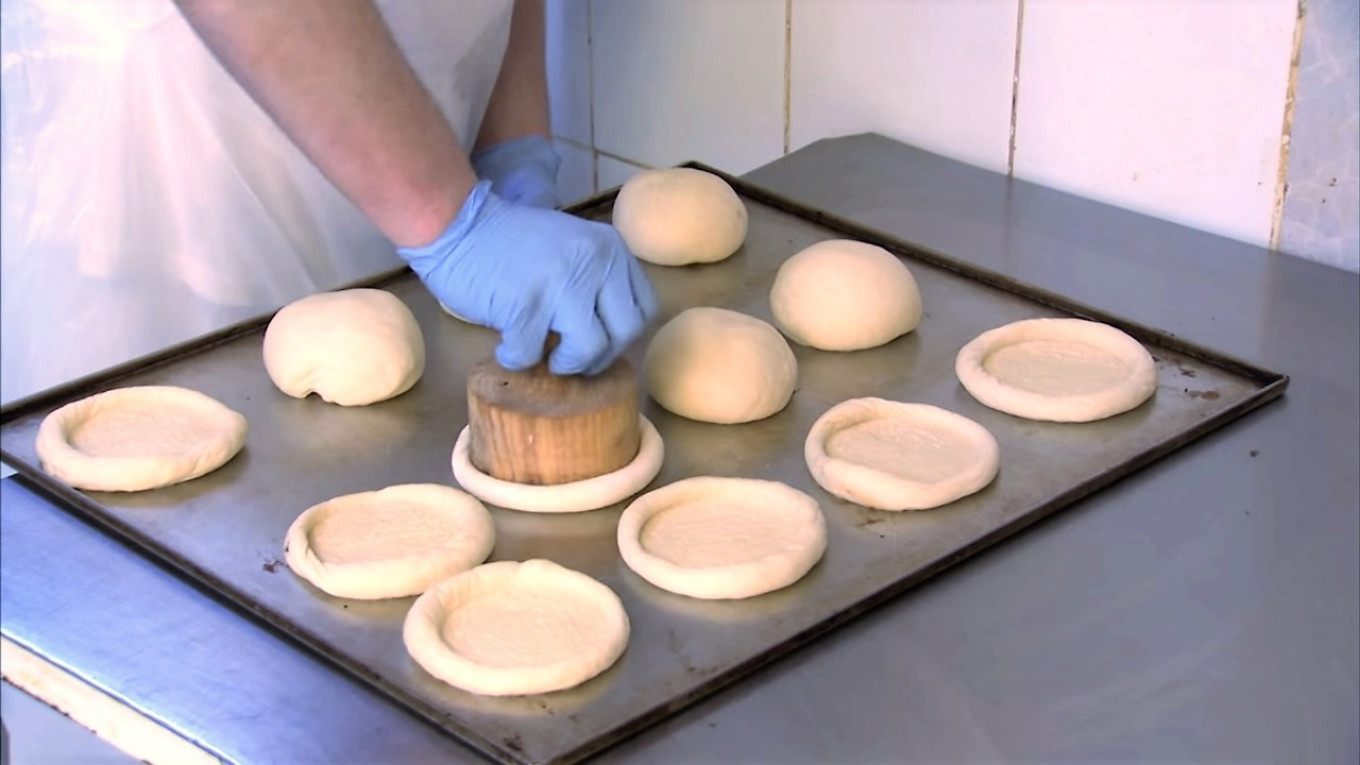
Everything would be fine if we could find the word "vatrushka" in ancient sources like Domostroi, for example. But no! Nothing even resembling the term "vatrushka" can be found there, although there are plenty of pies and pastries made with pot cheese.
"On the feast day of the Intercession there is a large pie baked in the stove with blini and pot cheese, big fritters served with honey, a big pie made of blinis, savory pies made with pot cheese, pies and round cottage loaves served in between soups and stews… On Easter the fast is broken with fried pies filled with eggs and pot cheese, and cheese fritters with eggs and pot cheese.”
So you can’t say that dishes like vatrushki were not made in Russia. Almost every province had its version. In Arkhangelsk they made shanezhki with fillings. In Kostroma they made kuleika, in Voronezh — mandryka. There were also little filled dough pies called kokorka, kokurka, kruzhalka and dozens of other variants. And there were shangi made with pot cheese and potatoes that were very similar to vatrushki.
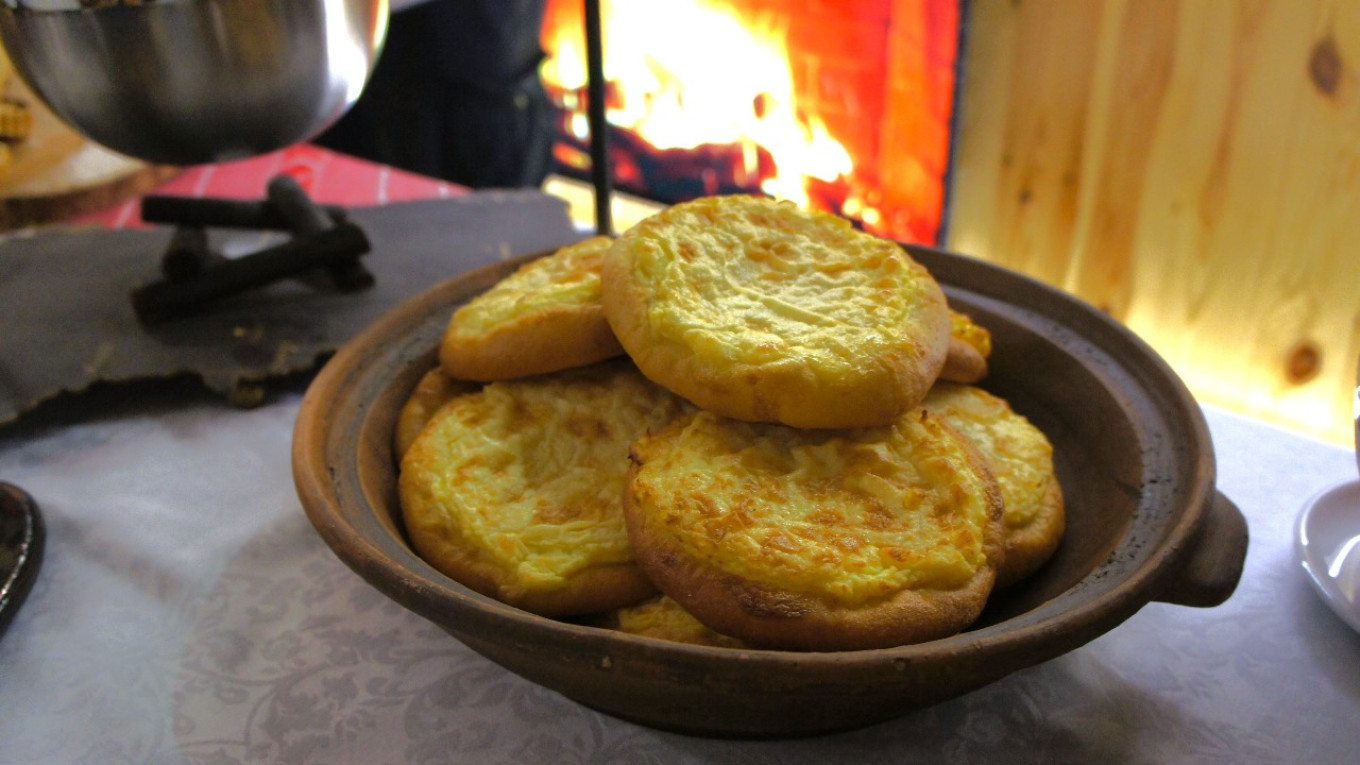
In Vladimir Dal's dictionary we find:
Shanga: a kind of vatrushka, cheese pastry or simple round flatbread.
Kuleika: a patty, shanga, a kind of kalach or cheese crescent but unleavened and made of short pastry.
Mandryka: a flatbread made of dough with cottage cheese, a kind of vatrushka.
Nalivyshka: a pie with a liquid filling, like a vatrusha with high sides.
They, of course, differed in the way they were prepared. Some resembled today's vatrushka — made of yeast dough, with molasses and other sweeteners. Some (Arkhangelsk kalitki) were made from unleavened rye dough. In Ivanovo kuleiki were made with a kind of short crust pastry.
The fillings also differed. In addition to pot cheese or jam, which is traditional today, porridge, mushrooms, minced meat, and later potatoes were used.
The technology and shape varied, too. Some of them had round edges, others were folded over. Kalitki were baked with filling. Udmurt perepechi were cups of molded dough that were baked in the oven, and later a thin filling made with egg was poured into it.
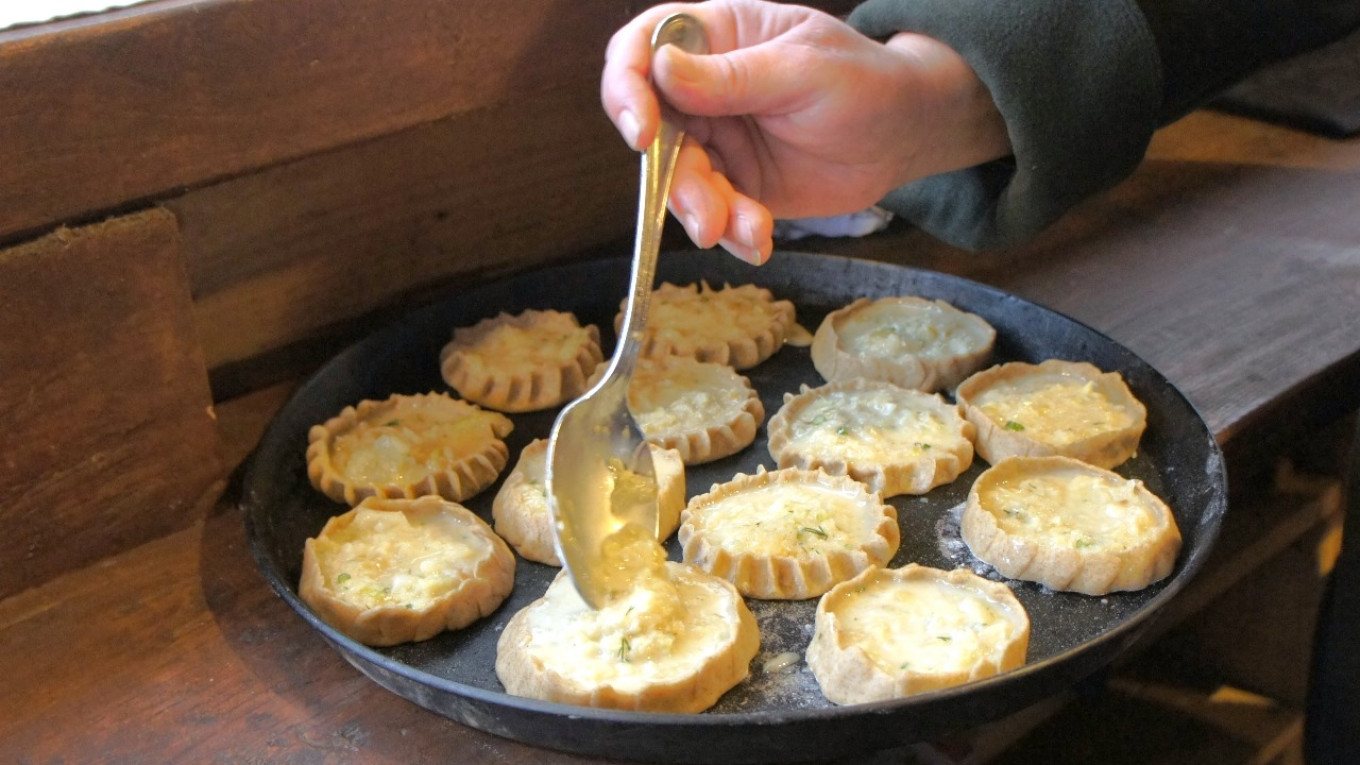
Here’s a video we shot a few years ago in Izhevsk (the capital of Udmurtia): a short master class on making perepechi from a local master.
But with all the variety of similar baked goods there was only one thing missing — the word "vatrushka." It appears only in the 18th century. And its origin gives us a clear answer as to why then.
There were many versions to explain the etymology of the word "vatrushka.” But in general by the time Max Fasmer was working (1930-50s) there was one main version. In many Slavic languages (Polish, Czech, Croatian, Serbian, etc.) there is a word "vatra" (or its derivatives) that means "hearth, fire." The USSR sold cigarettes called "Vatra" that were produced in factories in Cherkassy, Kharkov, and other cities. They were so strong that even mosquitoes stayed away.
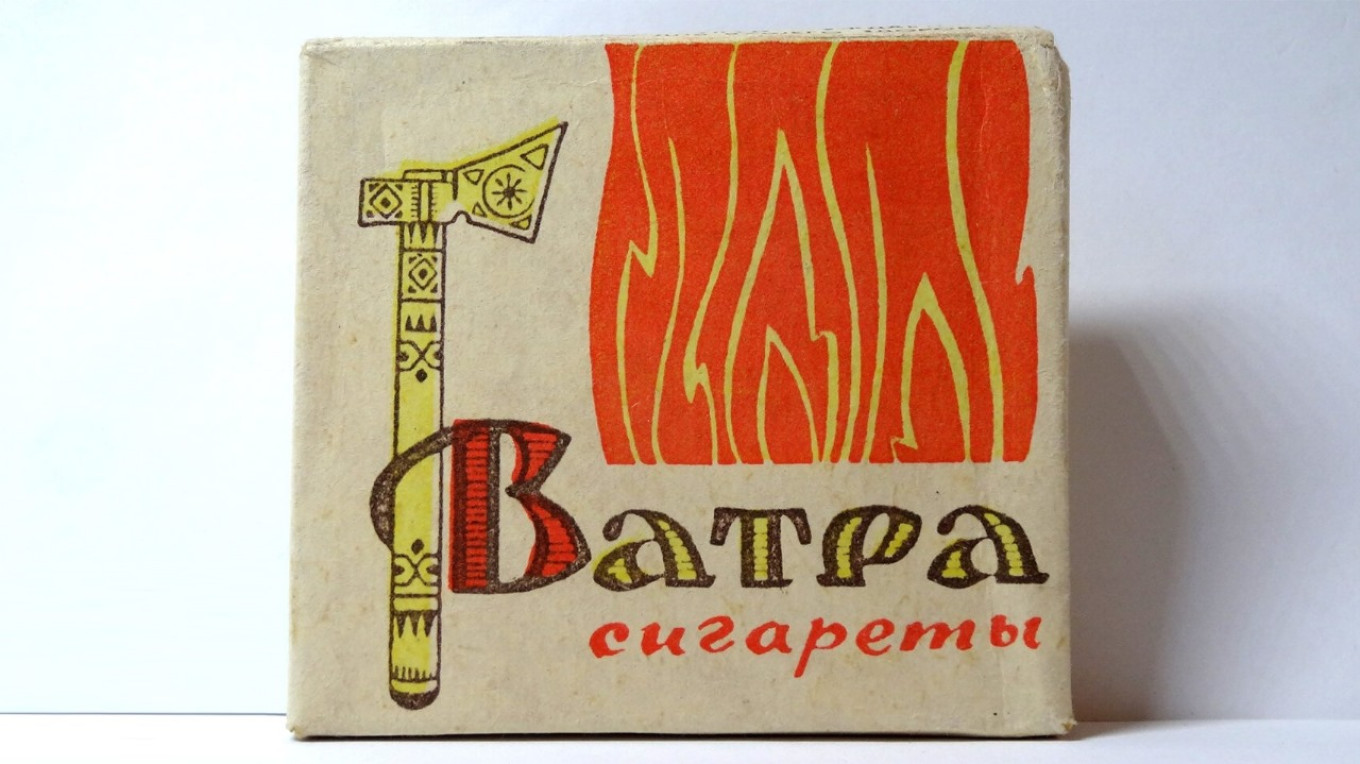
So vatrushka came from "vatra." The term appeared in the 18th century, because that is when Russia began to “grow” into the lands to the south-west: Crimea, Wallachia, Moldova, part of the Polish lands, and so on.
And then there is another tricky bit of history. In 1795, the Russian educator Vasily Lyovshin lamented that "information about Russian dishes was almost completely forgotten" and therefore "it is no longer possible to present a complete description of the Russian cookery, and we have to be satisfied only with what can still be collected from what remains in memory, because the history of Russian cookery has never been committed neither to writing, nor to embossing [printing]".
Vatrushki are the clearest example of this "almost completely forgotten." There were so many regional dishes similar to vatrushki (see above), but young people of the mid-19th century, and probably the majority of the urban population never heard of "kokurki" and "mandryki." First, because they had been forgotten. And secondly, because all these regional names got confusing in large cities. Who would know if shanezhka had filling or not, of if it was baked from rye or wheat flour? Pure confusion. That's where the new word "vatrushka" came in handy.
In fact, both Vladimir Dahl and the authors of other dictionaries try to explain all these regional specialties with the word "vatrushka." They say, "this is a kind of vatrushka." And the public understands.
And that’s how vatrushka became an "indigenous Russian dish."
Vatrushki Filled With Pot Cheese
Ingredients
For the first sponge
- 200 g (7 oz. or 1 ¼ c) highest grade wheat flour
- 160 g (5.6 oz. or 2/3 c) room temperature milk
- 5 g (0.25 oz. or 2.5 tsp) compressed yeast or 2.5 g (0.08 oz. or scant 1 tsp) quick-acting dry yeast
for the second sponge
- all of the first sponge
- 4 g (3/4 tsp 1.5 oz.) fine salt
- 40 g (3 ¼ Tbsp or 1.4 oz.) fine sugar
- 40 g (5 1/8 Tbsp or 1.4 oz.) flour
for the dough:
- all of the second sponge
- 40 g (3 ¼ Tbsp or 1.4 oz.) fine sugar
- 1 medium egg
- 100 g (3.5 oz. or ½ c) butter
- 160 g (5 oz. or 1 c) fine wheat flour
for the filling:
- 300 g (10.5 oz. or 1 ¾ c) pot or drained cottage cheese
- 100 g (3.5 oz. or ½ c) sugar
- 90 g (3.1 oz. or ¼ c) sour cream
- 40 g (1.4 oz) egg
- 1/2 tsp vanilla extract
- Beaten egg to seal the vatrushki
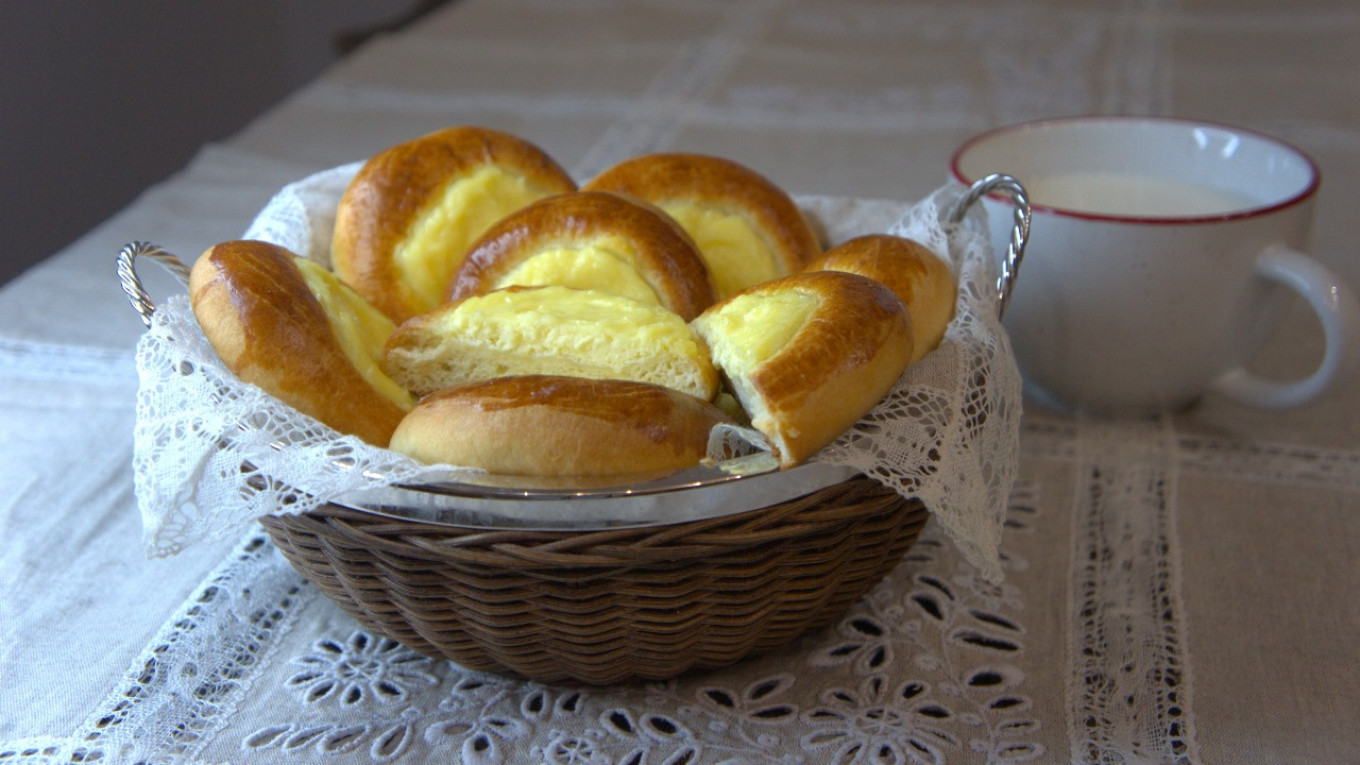
Instructions
- Prepare the first sponge. Dissolve the yeast in the milk, add the flour and stir. Cover with clingfilm and leave at room temperature for 2 to 2.5 hours at 25-28°C /77-83°F.
- Prepare the second sponge. Add salt, sugar, flour and flour to the first sponge and mix well in a food processor or with your hands on a work surface. Cover with clingfilm and leave for 1 hour.
- Cut the butter into chunks.
- Add the sugar, egg, butter and flour to the risen sponge (it will not rise very much). Knead the dough in a mixer for 3 minutes on low speed and 12 minutes on medium. The dough should be soft.
- Divide the dough into 16 pieces. Roll each into a tight ball and place on the table. There is no need to dust the table with flour. The dough is quite greasy, it will not stick.
- Cover with clingfilm and leave for 1 hour.
- Prepare the filling. Rub the cottage cheese through a metal sieve (preferable) or beat with a mixer.
- Mix cottage cheese, sour cream, sugar, egg and vanilla. Leave for 15-20 minutes and mix again.
- Turn the oven on to preheat to 235°C/455°F.
- Transfer the balls to baking trays lined with baking paper (8 pieces each).
- Using a glass with a 7-8 cm (2.5-3 inch) bottom, press the center of the dough ball. This will form a bottom and even rounded sides.
- Beat the egg very well with a fork, so that that there are no streaks of egg white and brush on the bottom and sides of the dough. The egg baste will keep the bottom from getting moist from the filling. The bottom, greased with egg, will not be moist from cottage cheese.
- Spread the filling, about 30-35 grams at a time.
- Put the trays in the preheated oven.
- Bake for 20 minutes. Change the places of the trays as they bake.
A Message from The Moscow Times:
Dear readers,
We are facing unprecedented challenges. Russia's Prosecutor General's Office has designated The Moscow Times as an "undesirable" organization, criminalizing our work and putting our staff at risk of prosecution. This follows our earlier unjust labeling as a "foreign agent."
These actions are direct attempts to silence independent journalism in Russia. The authorities claim our work "discredits the decisions of the Russian leadership." We see things differently: we strive to provide accurate, unbiased reporting on Russia.
We, the journalists of The Moscow Times, refuse to be silenced. But to continue our work, we need your help.
Your support, no matter how small, makes a world of difference. If you can, please support us monthly starting from just $2. It's quick to set up, and every contribution makes a significant impact.
By supporting The Moscow Times, you're defending open, independent journalism in the face of repression. Thank you for standing with us.
Remind me later.







